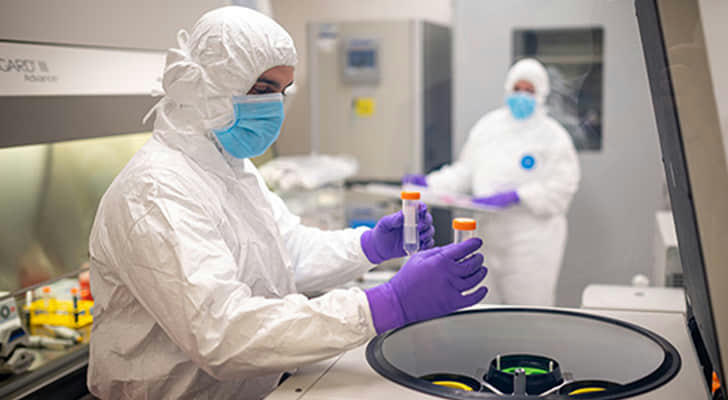Will Cell and Gene Therapies Change the Health Care Landscape?
Imagine if we could actually cure genetic diseases and chronic illnesses right at their source. Welcome to the exciting world of cell and gene therapies, where what once seemed like science fiction is now becoming a reality. These innovative treatments are changing how we approach medical care, offering hope for diseases that were once considered untreatable. Let's dive into how cell and gene therapies are reshaping the biopharma landscape, what hurdles they face, and what the future might hold.

What Are Cell and Gene Therapies?
Cell and gene therapies represent a major leap in how we treat diseases. Cell therapy involves using healthy human cells to repair or replace damaged tissues. Gene therapy, on the other hand, involves altering or correcting genes within a patient's cells to tackle diseases at their genetic root. These approaches could potentially offer long-lasting or even permanent cures.
The Impact of These Therapies
The potential for cell and gene therapies is huge. A recent survey found that 78% of experts believe these therapies could revolutionize the treatment of chronic and genetic diseases. By addressing the genetic causes of diseases, these therapies offer hope where traditional treatments fall short.
Cutting-Edge Developments in Cell Therapy
CAR-T Cell Therapy
One of the most exciting developments in cell therapy is CAR-T cell therapy. This cutting-edge treatment involves modifying a patient's T cells so they can specifically target cancer cells. CAR-T therapies have shown great success in treating certain blood cancers like acute lymphoblastic leukemia (ALL) and non-Hodgkin lymphoma.
For example, Novartis' Kymriah and Gilead's Yescarta are CAR-T therapies that have proven highly effective in clinical trials and are now available to patients. Emily Whitehead, the first child to receive Kymriah for ALL, went into complete remission within months, showcasing the life-saving potential of CAR-T therapy.
Stem Cell-Based Therapies
Stem cell therapies are also making waves, with the potential to treat a range of conditions from neurodegenerative diseases like Parkinson's to heart failure. Mesenchymal stem cells (MSCs) are particularly promising due to their ability to turn into different cell types, making them a valuable tool in regenerative medicine.
A case from Stanford University shows MSCs restoring motor function in mice with stroke-induced brain damage, hinting at possible future treatments for human stroke recovery.

Innovations in Gene Therapy
Gene Editing Technologies
Gene editing, especially with tools like CRISPR-Cas9, is revolutionizing gene therapy. This technology allows precise corrections to genes, potentially fixing the genetic defects behind various diseases. For instance, CRISPR-Cas9 has been used to correct a gene mutation in mice that causes Duchenne muscular dystrophy, suggesting a future where such gene defects in humans could also be corrected.
Pioneering Gene Therapies
Some gene therapies have already received approval. Luxturna, developed by Spark Therapeutics, is the first FDA-approved gene therapy for a genetic form of vision loss. Another notable example is Zolgensma from Novartis, which treats spinal muscular atrophy (SMA) by providing a working copy of the SMN1 gene.
Market Trends and Growth
The cell and gene therapy market is booming. A Grand View Research report forecasts that the global market will reach $35.4 billion by 2027, growing at a rate of 20.4% annually. This growth is fueled by increased investment in research, more clinical trials, and more therapies receiving regulatory approval.
Addressing Key Challenges
Overcoming Manufacturing Hurdles
One of the big challenges for cell and gene therapies is manufacturing. Producing these therapies is complex and requires specialized facilities. Ensuring consistent quality and scaling up production to meet global needs are significant hurdles, with 82% of experts acknowledging these issues.
Navigating Ethical and Regulatory Complexities
Gene therapy also raises ethical questions, particularly regarding modifications that can be passed to future generations. While gene therapies focused on somatic cells (non-reproductive cells) are less controversial, they still need strict oversight. Concerns include ensuring informed consent, fair access to treatments, and managing the long-term effects of genetic changes. About 76% of experts worry about ethical implications, and 68% stress the need for strong regulatory frameworks to prevent misuse.
Balancing Costs and Access
The high cost of these therapies is another major issue. For example, Zolgensma costs around $2.1 million per patient, making it one of the most expensive treatments available. Addressing these high costs and improving access is crucial for wider adoption, with 64% of industry professionals highlighting this need.

What Lies Ahead
Personalized Medicine
Looking ahead, cell and gene therapies are set to play a key role in personalized medicine. These therapies can be customized to each patient's genetic profile, leading to more effective treatments with fewer side effects. As genomic sequencing becomes more common and affordable, personalized therapies will likely become more prevalent, with 85% of experts seeing it as a major future driver.
Emerging Technologies
Technologies like artificial intelligence (AI) and machine learning are also advancing these therapies. AI can help find new treatment targets, refine treatment methods, and improve manufacturing processes. For instance, AI is being used to analyze genetic data and predict the success of gene editing techniques.

What Lies Ahead
Cell and gene therapies are opening up exciting new possibilities in medicine, offering potential cures for diseases that were once thought to be untreatable. Despite the challenges, ongoing advancements are paving the way for a future where personalized, effective, and accessible treatments could become the norm.
